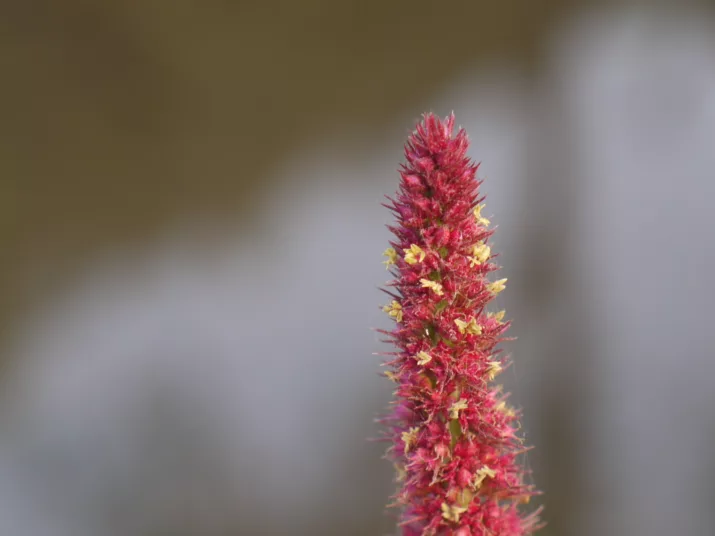
Photo: Dinesh Valke from Thane, India
What grows in Superland?
Whether it's the original tomato, crab apple or amaranth - there is great potential in old varieties and underutilized plants. They bring diversity to our fields and plates and could secure the future of our food supply.

Photo: Dinesh Valke from Thane, India
Original tomatoes
Who hasn't seen one? A plump, red tomato from the supermarket that hardly tastes of anything. This is because many modern varieties have been bred primarily for characteristics such as appearance, yield and shelf life - and not taste. But this is already changing - and this is where wild tomatoes come into play: because some have particularly useful characteristics such as robustness, resistance to diseases - or even a better taste.
Even if they are not suitable for large-scale cultivation, we should preserve their diversity - because if we lose them, it will be difficult to breed new varieties, whether through traditional cross-breeding or new genetic engineering methods.
Crab apple
Apples are the most popular fruit in Germany - but their future faces challenges. Most varieties grown today are genetically descended from a handful of parent varieties. Although these are sweet and easy to store and transport, they are also susceptible to diseases such as mildew and apple scab. They were only able to establish themselves through the use of pesticides. 100 years ago, a wide variety of apple varieties were still growing in Germany - over 1,000, many of them robust and regionally adapted. To make the apple fit for the future, we need to preserve this genetic diversity. Wild species such as the crab apple, which grows here in Superland, also play a role in this: its genetic material is a valuable resource for breeding new varieties.
Amaranth
Have you ever heard of “orphan crops”? “Orphan crops are crops that have received little attention on the world market or in research. However, some of them have long played a central role in nutrition in some regions - so they are not actually orphans at all. Examples include millet, sweet potatoes, cassava and tef - as well as amaranth, which grows here in the bed.
Only a few plant species dominate cultivation worldwide: rice, maize and wheat account for a large proportion of the global diet. However, there are thousands of other crops - many of which are adapted to different soils and climatic conditions. This diversity has long been neglected, but offers a great opportunity: resilient, locally adapted species can contribute to food security, especially in times of climate change. There is also great potential to improve them through increased research and breeding. This is why the Crop Trust - the World Trust Fund for Crop Diversity - speaks of “opportunity crops”.
Amaranth is a good example of this. The plant has been cultivated in Central and South America for thousands of years. It copes well with heat and drought, provides protein-rich, gluten-free grains - and requires comparatively little water. Nevertheless, it has hardly been improved through breeding: the seeds are small and fall off easily - unfavorable for harvesting, but ideal for natural propagation.
This is where research comes in. Because the genetic diversity of orphan crops holds great potential. Targeted breeding can improve yield, nutritional value and suitability for cultivation - and thus make important contributions to a more diverse, more crisis-resistant agriculture.